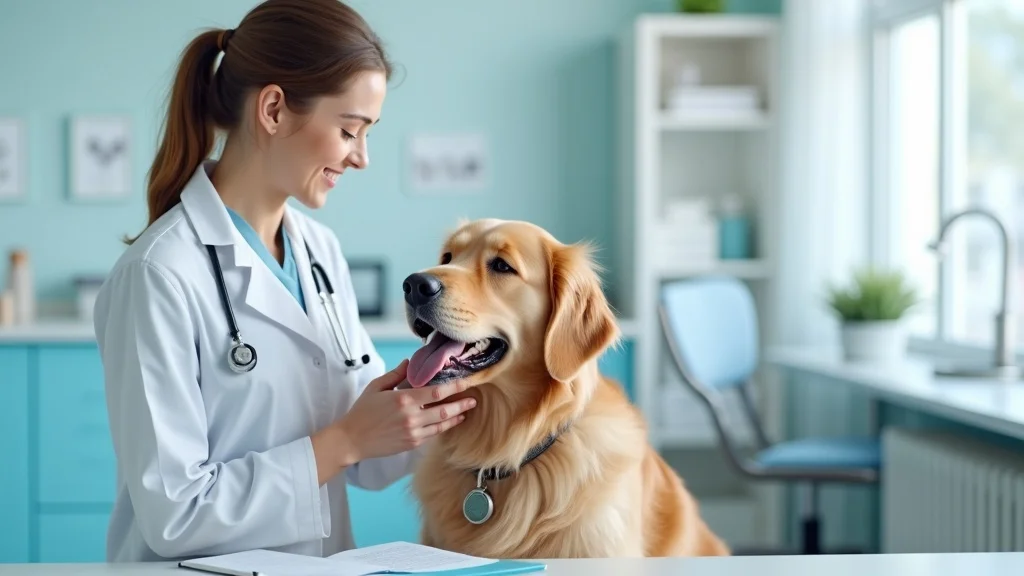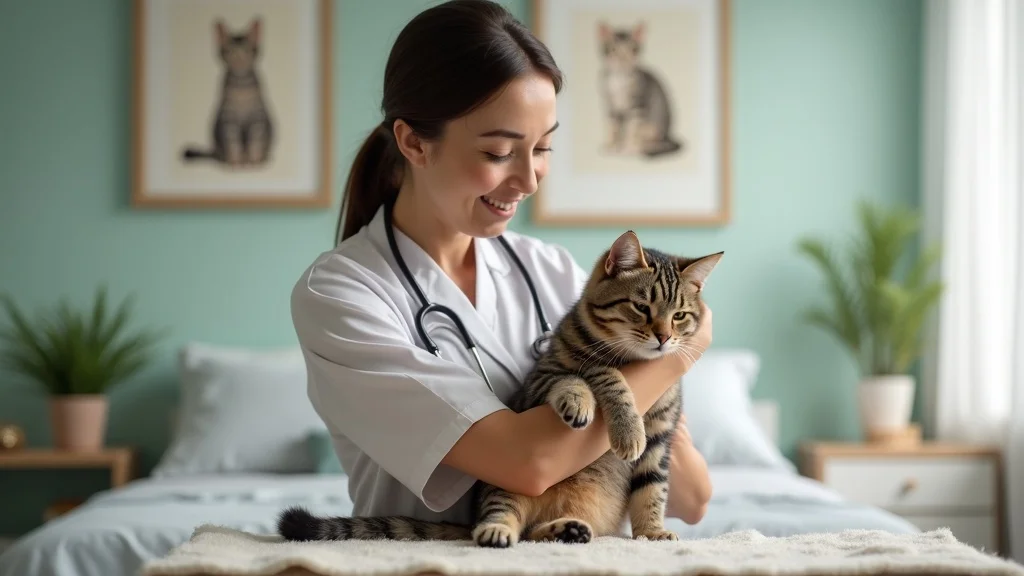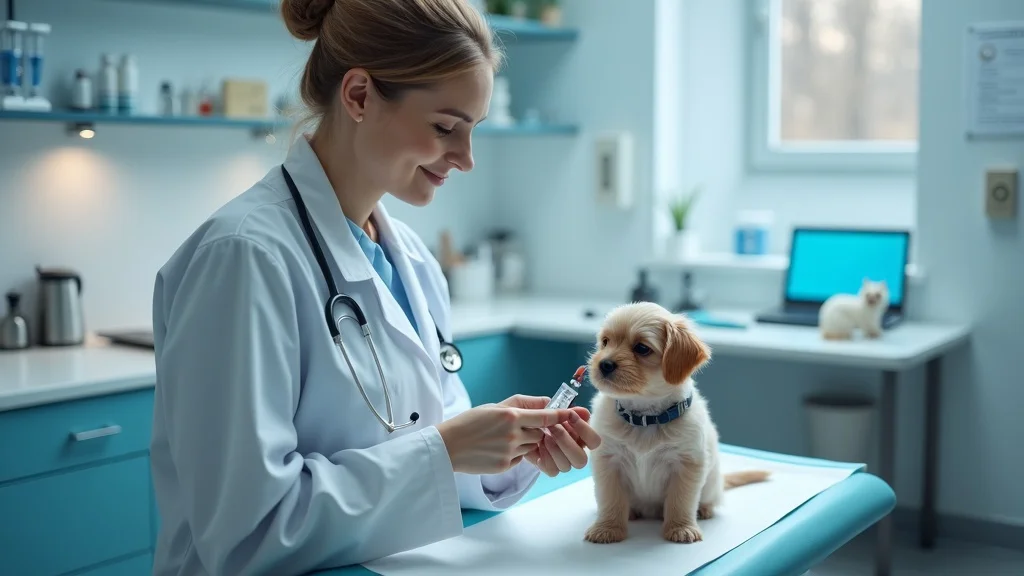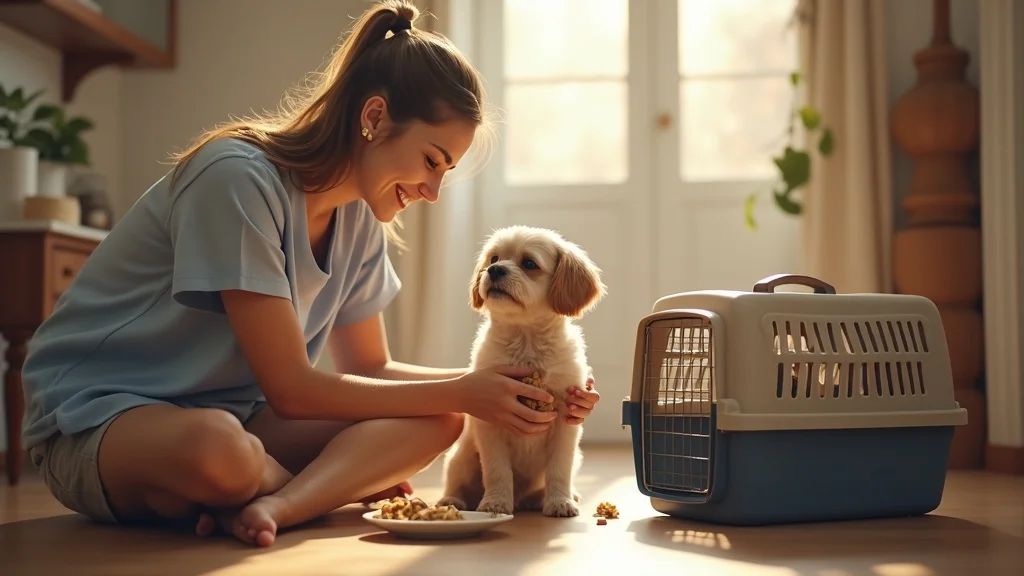Ever wondered if you’re taking your furry friend to the vet often enough—or too much? The truth might surprise you! Regular vet visits aren’t just for emergencies; they’re a lifeline for longer, happier pet lives. Whether you’re a new pet parent, a long-time dog lover, or a dedicated cat caretaker, knowing how often should pets see the vet can make all the difference in your companion’s well-being. Dive in to learn the expert-backed schedules, practical tips, and common myths—so your beloved pet gets the care they truly deserve.
Unlocking the Mystery: How Often Should Pets See the Vet?
When it comes to pet health, one question rises above the rest: How often should pets see the vet? The answer depends on your pet’s species, age, lifestyle, and current health condition. For many, an annual wellness visit is a gold standard for preventative care, but there are important exceptions. Puppies, kittens, and senior dogs or cats need more frequent check-ups to monitor growth, catch early signs of disease, and ensure they are up-to-date on evolving vaccine schedules. In these visits, your veterinarian may recommend further diagnostic tests, such as a blood test or physical exam, to spot health issues early and provide proper treatment plans, keeping that tail wagging or purr rumbling for years to come.
- Importance of regular wellness visits
- Guidelines for dogs, cats, and senior pets
- Annual wellness and wellness exam schedules
- Indicators of special veterinary attention
- Common myths and misconceptions
- Tips for making vet visits less stressful
"Routine vet visits aren’t just for emergencies — they’re your pet’s lifeline to a longer, healthier, and happier life." – Dr. Samantha Greene, DVM
Why Regular Vet Visits Are Essential: Understanding the Basics
Veterinary check-ups are more than just a formality. Regular vet visits are crucial in preventing and identifying health problems early, which can significantly improve your pet’s quality of life and even extend their years with you. These appointments allow your vet to monitor for hidden health issues like dental disease, parasites, and silent conditions such as kidney or heart disease. Preventative treatments, routine vaccines, and wellness visits tailored for your pet’s needs ensure they stay healthy from paw to whisker.
Most wellness visits include a thorough physical exam, a review of your pet’s lifestyle and nutrition, and possibly diagnostic tests like blood work. Early diagnosis through routine checkups can keep little problems from becoming big emergencies. Whether you have a healthy adult dog, an active kitten, or a senior cat, regular vet check-ups provide peace of mind and a healthier, longer life for your cherished companion.
Wellness Visit: Preventative Care for Lifelong Health
The goal of a wellness visit is to catch potential health issues before they become serious. During these visits, your vet will conduct a physical exam, check your pet’s weight, teeth, ears, skin, and joint health, and discuss parasite prevention and nutrition. Blood tests or diagnostic tests may be included for certain age groups or if your pet has a specific health condition. For young, healthy dogs and cats, a wellness exam also offers a great opportunity to update vaccinations and discuss spaying or neutering if not already done. Wellness visits are your first line of defense, helping ensure your pet enjoys every age and stage comfortably.

Annual Wellness and Wellness Check: Key Differences
It’s common to hear both “annual wellness visit” and “wellness check” used interchangeably, but there are key differences. An annual wellness visit is a scheduled, yearly appointment focused on your pet’s ongoing well-being. Here, the vet performs a full physical exam, updates vaccines, and may recommend routine diagnostic tests, depending on age or specific risk factors. A wellness check, however, can take place more often or in between annual exams, especially for senior dogs, cats, or those with chronic illnesses. These checks ensure treatments are effective or monitor any health changes.
Regular wellness exams, especially when conducted at consistent intervals, give your vet a valuable long-term perspective on your pet’s health. This proactive approach leads to earlier detection of changes in weight, behavior, and medical condition. Don’t underestimate the importance of these appointments— they add years to your pet’s life and keep those happy moments coming.
How Often Should Pets See the Vet? General Guidelines
General recommendations offer a helpful starting point when deciding how often pets should see the vet. Below, see the standard schedules by age and species. Remember, unique factors—such as lifestyle, health history, and breed-specific risks—may mean your furry friend needs a custom vet visit plan. Young pets (puppies and kittens) require frequent visits for vaccinations and growth checks, while healthy adult dogs and cats can usually stick to an annual wellness check. Seniors and those with chronic health conditions benefit from biannual or even quarterly check-ups. If your vet recommends more frequent appointments, it’s to safeguard your pet’s well-being, not just fill a calendar.
| Pet Type | Age Range | Recommended Visits |
|---|---|---|
| Puppy/Kitten | 0-1 Year | Every 3-4 weeks |
| Adult Dog/Cat | 1-7 Years | Once a year |
| Senior Dog/Cat | 7+ Years | Twiсe a year |
How Often Should Dogs See the Vet? Puppy, Adult, and Senior Dog Care
Dog parents often ask, “How often should I take my dog to the vet?” The answer changes as your best friend grows. Puppies need frequent visits for vaccines, deworming, and development check-ups. Healthy adult dogs thrive with annual exams, while senior dogs may require visits every six months due to increased risks of health conditions. Each visit helps catch new or subtle health issues—like changes in heart rate, lumps, or behavior—before they become emergencies. These regular check-ups not only ensure vaccinations and preventatives stay current but also give you peace of mind.
Routine wellness visits are central for adult dogs. Your vet will assess your dog’s coat, teeth, weight, and organ function, often recommending blood work or diagnostic tests for baseline health records. For senior dogs, the importance of more frequent wellness exams grows, as early detection of arthritis, dental disease, or organ dysfunction can add quality years to your furry friend’s life.
Puppy to Adult Dog Vet Visit Schedule
Puppies require a tailored vet visit regimen to support rapid growth and build immunity. Expect to visit the vet every 3-4 weeks from 6 to 16 weeks old, covering core vaccinations such as rabies, distemper, and parvovirus. Spay or neuter discussions also happen around 6 months, with counseling on diet, socialization, and parasite prevention. As puppies mature into adult dogs, welfare visits shift to annual schedules, yet each wellness exam ensures continued protection with boosters and early disease screening.

Adult Dogs Vet Visits: What to Expect
For a healthy adult dog, annual vet visits are essential for preventing and catching health problems. A typical wellness exam may include a thorough physical exam, vaccines, parasite screenings, and sometimes diagnostic tests like blood work, especially in middle age. This routine checkup offers a chance to discuss nutrition, exercise, weight management, dental care, and any changes you’ve noticed at home. Your veterinarian may recommend additional tests for certain breeds prone to particular health conditions or if your dog is spayed or neutered. These yearly check-ups are vital for tracking subtle changes and ensuring your adult dog remains a happy, healthy companion.
Senior Dogs Wellness Exam and Health Conditions
As your dog ages, their needs change. Senior dog vet visits typically occur twice a year or more often if your pet has ongoing health issues such as arthritis, diabetes, or heart disease. Each wellness exam for a senior dog will include routine blood tests, urinalysis, and a thorough physical exam focused on detecting subtle changes. Early identification of health conditions allows for better management and improved quality of life. With advancing age, these check-ups become essential, enabling your vet to tailor care plans, adjust medications, and screen for common problems in senior dogs, such as cognitive decline or cancer.
"For most adult dogs, a yearly wellness exam ensures vaccinations are up-to-date and helps catch developing health conditions early." – American Veterinary Medical Association
How Often Should Cats See the Vet? Kittens, Indoor vs. Outdoor, and Seniors
Cats often hide illness, making regular vet visits extra important. The frequency of cat vet visits evolves with age and lifestyle. Kittens should see the vet every 3-4 weeks until 16 weeks of age for vaccinations, parasite checks, and advice on feeding and litter box habits. Healthy adult cats—especially indoor ones—should visit the vet yearly for wellness checks, but outdoor cats face greater risks and might need more frequent visits. For senior cats, biannual visits catch issues like dental disease, thyroid problems, or kidney disease before they progress.

Kitten to Adult Cat Vet Visits
Kittens are vulnerable to serious diseases, so frequent vet visits during the first months are crucial for vaccinations, deworming, and health assessments. After this initial stage, adult cats should transition to annual visits for wellness exams and vaccinations. These check-ups are essential, since cats are experts at masking discomfort and illness. Your vet will monitor weight, dental health, and screen for diseases common in cats, like feline leukemia or kidney disease, often using blood tests to detect hidden problems. Annual visits ensure your healthy adult cat stays well protected and can thrive, whether they roam outdoors or lounge inside.
Indoor Cat Vet Visits: Are They Different?
Indoor cats have lower exposure to some risks—like car accidents or certain infections—but that doesn’t mean they can skip vet visits. Annual wellness checks are still necessary, as indoor cats are prone to dental disease, obesity, and silent issues like kidney and thyroid problems. Routine check-ups, including physical examinations and occasional diagnostic tests, help ensure your indoor cat’s quality of life remains high. While spayed or neutered indoor cats may have slightly different schedules for vaccines, annual exams remain the norm for prevention and early detection.

Senior Cats: More Frequent Wellness Checks
Senior cats—generally considered 7 years and older—require more frequent vet visits, often every 6 months. These cats are at higher risk for chronic health conditions like arthritis, diabetes, or kidney disease. Regular wellness exams for senior cats should always include a thorough physical exam and, frequently, blood work to monitor organ function. Catching subtle changes early can make a huge difference in quality of life and treatment options. As always, talk to your vet about any behavioral shifts, appetite changes, or other observations, as cats are notorious for hiding discomfort until an illness is advanced.
Are Annual Vet Visits Necessary for All Pets?
Some pet owners wonder whether annual vet visits are truly necessary, especially for young or seemingly healthy pets. The consensus among veterinary professionals is yes—regular vet visits are crucial in keeping pets well. Whether it’s a wellness exam for a healthy adult dog or monitoring for chronic conditions in a senior cat, annual (or more frequent) check-ups help catch changes that owners might miss. Adjustments for breed, health status, and lifestyle may be needed, so always work with your veterinarian to create the ideal plan for your individual pet.
Annual Wellness and Evolving Vaccine Schedules
Vaccine needs change over time; annual wellness visits ensure your pet’s protection remains current. Your veterinarian will review lifestyle, travel plans, and local risk factors before updating core and optional vaccines. For example, dogs going to boarding kennels or spending time outdoors may need additional shots for kennel cough or Lyme disease. Vaccination schedules for cats may be adjusted if they’re strictly indoors, but many, like rabies, remain essential and required by law. Wellness exams are the ideal time to discuss these evolving needs so your pet stays safe and compliant with health regulations.

Breed and Health Condition Factors
No two pets are alike. Some breeds are predisposed to certain health problems, from hip dysplasia in large dogs to kidney disease in specific cat breeds. Your pet’s health condition may also warrant extra attention. For example, dogs with chronic allergies, or cats diagnosed with diabetes, will require more frequent visits and condition-specific diagnostic tests. Maintaining a close relationship with your vet ensures these issues are monitored closely and treatment is promptly updated as your pet’s needs change.
Special Considerations: Health Conditions and Emergency Vet Visits
While routine wellness visits prevent many issues, emergencies and chronic conditions demand fast action. Knowing when your pet requires immediate veterinary help can be life-saving. Some common red flags include persistent vomiting, difficulty breathing, sudden weakness, or dramatic behavior changes. Annual or biannual exams offer proactive monitoring, but emergencies can arise unexpectedly—even for healthy adult pets.
For pets managing chronic health conditions, regular vet visits become a lifeline for adjustment and prevention. Open communication with your veterinarian is key: they’ll customize a schedule that fits your pet’s unique challenges and ensures they receive the best quality care possible.
Recognizing Signs for Immediate Vet Visit
Some symptoms mean your pet needs medical help right away. These include breathing trouble, collapse or seizures, excessive bleeding, or inability to urinate. If your pet seems severely distressed or their behavior changes suddenly, call your vet immediately. Even less dramatic symptoms—such as decreased appetite, limping, or wounds that won’t heal—can signal underlying health problems that need prompt attention. It’s always better to err on the side of caution; waiting can turn a treatable problem into an emergency. Regular wellness visits won’t prevent every emergency, but they help you recognize what’s normal and what’s not, so you can act quickly.
Managing Chronic Health Conditions Through Regular Vet Visits
For pets already diagnosed with conditions like diabetes, kidney disease, or arthritis, vet visits are more frequent and often involve more extensive diagnostic tests. Routine blood work, physical exams, and medication reviews are crucial to adjust treatment plans and catch complications early. These visits are also the perfect chance to discuss changes in mobility, appetite, or behavior with your vet, ensuring your pet’s quality of life is always front and center. Never skip these appointments, as proactive management can prevent suffering and slow the progression of many chronic illnesses.
Making Vet Visits Stress-Free: Tips for Pets and Owners
Vet visits don’t have to be scary—for pets or their people! Preparation is key. Start with short car rides and positive reinforcement, making the carrier a fun, safe place. Choose a vet who has experience with your pet’s species and takes time to build trust. Consider scheduling the appointment for a quiet part of the day to shorten wait times and reduce anxiety.
- Preparing your pet for a vet visit: Get your pet used to their carrier, leash, or halter in advance. Bring favorite treats or toys for comfort. Practice gentle handling at home.
- Reducing anxiety during vet visits: Use soothing words and familiar objects. Ask about waiting in your car if your pet is nervous. For grumpy travelers, vets might recommend anti-anxiety aids for the journey.
- Choosing the right vet for your pet's needs: Look for friendly staff, a clean facility, and veterinarians who listen and answer your questions. A good match makes every visit smoother and more productive.

Watch our quick, upbeat explainer video and follow a friendly pet through a typical wellness visit. See what happens during a routine vet check, learn what questions to ask, and pick up pro tips for making your next appointment as smooth as possible (for you and your furry friend).
People Also Ask: How Often Should Pets See the Vet?
How often should my pet see a vet?
Answer:
Most healthy adult dogs and cats need to see the vet once a year for a wellness exam. Puppies, kittens, and senior pets may need to visit the vet more frequently—every 3-4 weeks for young pets and every 6 months for seniors. Always check with your veterinarian for a schedule that works for your pet’s unique needs.
How often should an indoor cat go to the vet?
Answer:
Indoor cats can have hidden health problems, so they should visit the vet for a wellness check at least once a year. As they age, senior indoor cats may benefit from wellness visits every six months. Your vet may recommend additional visits if your cat develops a chronic health condition.
Are annual vet visits necessary?
Answer:
Yes, annual vet visits are considered essential by veterinarians. They help with early detection of health issues, keeping vaccinations up-to-date, and maintaining your pet’s overall wellness. Skipping an annual visit can mean missing early signs of illness that could be treated more easily if caught sooner.
What is a typical vet schedule?
Answer:
A typical vet schedule for most pets is:
- Puppies/kittens: Every 3-4 weeks until 16 weeks old
- Healthy adult dogs and cats: Annually
- Senior pets: Every 6 months
This may change if your pet has a specific health condition or risk factor.
FAQs About How Often Should Pets See the Vet
-
Who decides how often pets should see the vet?
Your veterinarian and you decide together, based on your pet’s age, lifestyle, and health. -
Can skipping a vet visit harm my pet?
Yes. Missing a vet visit can mean late detection of treatable conditions, affecting your pet’s long-term health. -
What should I do if I can’t afford regular vet visits?
Look for local clinics, low-cost wellness events, or pet health insurance. Ignoring routine wellness may lead to higher costs down the line. -
Are there vaccines or exams that can be skipped?
Some vaccines are essential by law or for safety. Discuss with your vet which ones are truly required and which can be tailored to your pet’s risk.
Key Takeaways: How Often Should Pets See the Vet?
- Regular vet visits are vital for preventative care and early detection of issues.
- Most adult pets should visit the vet annually; seniors and young pets may need more frequent visits.
- Factors like lifestyle, breed, and medical history affect vet visit frequency.
- Consult your veterinarian for individualized guidance.
Discover why annual wellness exams are the cornerstone of proactive pet healthcare. Practical, vet-recommended tips—explained in an easy-to-watch video.
Final Thoughts on How Often Should Pets See the Vet
"Staying proactive with your pet’s vet visits can add years to their life and life to their years."
Love pets as much as we do? Join our monthly newsletter for tail-wagging tips, adorable stories, and smart pet care hacks. 🐾 Subscribe now — it's paws-itively free! https://pawpressnews.com
Regular veterinary visits are essential for maintaining your pet’s health and catching potential issues early. The frequency of these visits varies based on your pet’s age, species, and health status.
Puppies and Kittens (0–1 Year): Young pets require frequent check-ups to monitor growth, administer vaccinations, and prevent parasites. It’s recommended to schedule visits every 3–4 weeks until they reach about 16 weeks of age. (americanhumane.org)
Adult Pets (1–7 Years): Healthy adult dogs and cats should have annual wellness exams. These visits typically include physical examinations, vaccinations, and discussions about diet and behavior. (petmd.com)
Senior Pets (7+ Years): Older pets are more susceptible to health issues such as arthritis or kidney disease. Therefore, biannual visits are often recommended to monitor and manage age-related conditions effectively. (aaha.org)
Regular veterinary care is crucial for your pet’s well-being. By adhering to these guidelines, you can help ensure a long, healthy, and happy life for your furry companion.
 Add Row
Add Row  Add
Add 




Write A Comment